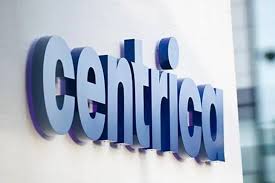Moderna, Inc. (NASDAQ: MRNA), a pioneering biotechnology company, has captured investor attention with its expansive portfolio of messenger RNA (mRNA) medicines. As the healthcare sector continues to evolve, Moderna stands at the forefront with a market capitalization of $10.31 billion. However, the company is navigating through a challenging financial landscape, marked by a significant dip in revenue and negative earnings per share (EPS).
Currently trading at $26.67, Moderna’s stock has experienced considerable volatility, with a 52-week range between $23.65 and $137.90. This volatility may seem daunting, but it also presents a window of opportunity for investors seeking high-growth potential. The average analyst target price is set at $47.59, indicating a substantial potential upside of approximately 78.44%. Despite this optimistic target, the stock’s recent performance has been underwhelming, with a slight price change of -0.68 (-0.02%).
A closer look at Moderna’s valuation metrics reveals some areas of concern. The absence of a trailing P/E ratio and a forward P/E of -3.61 suggest that the company is currently unprofitable, a sentiment echoed by a negative EPS of -8.73. The financial strain is further highlighted by a 35.30% decline in revenue growth and a return on equity (ROE) of -29.34%. Additionally, the company’s free cash flow stands at a negative $3.2 billion, underscoring the financial hurdles Moderna faces.
Despite these challenges, Moderna’s strategic partnerships and diverse vaccine pipeline offer a beacon of hope. The company’s collaborations with industry giants like AstraZeneca and Merck & Co., Inc., along with its focus on developing vaccines for a range of diseases, from COVID-19 to seasonal influenza, position it well for future growth. Moreover, its ventures into oncology therapeutics and rare disease products could potentially open new revenue streams.
Investor sentiment around Moderna remains mixed, with 5 buy ratings, 17 hold ratings, and 4 sell ratings from analysts. This cautious optimism is reflected in the technical indicators, where the Relative Strength Index (RSI) stands at 22.35, suggesting the stock is currently oversold. The 50-day and 200-day moving averages at $26.27 and $41.33, respectively, indicate a bearish trend, which may shift as the market responds to new developments in Moderna’s pipeline.
For investors, the key to capitalizing on Moderna’s potential lies in understanding the inherent risks and the timing of entry. While the company’s financial metrics paint a challenging picture, its innovative edge and strategic alliances provide a foundation for a possible turnaround. As Moderna continues to expand its mRNA technology applications, investors with a high-risk tolerance and a long-term perspective may find the current valuation an attractive entry point.
As Moderna navigates this tumultuous financial period, its ability to leverage strategic partnerships and expand its product offerings will be crucial in determining its future trajectory. Investors should keep a close watch on upcoming earnings reports and product developments, which could serve as catalysts for stock price movement.




































